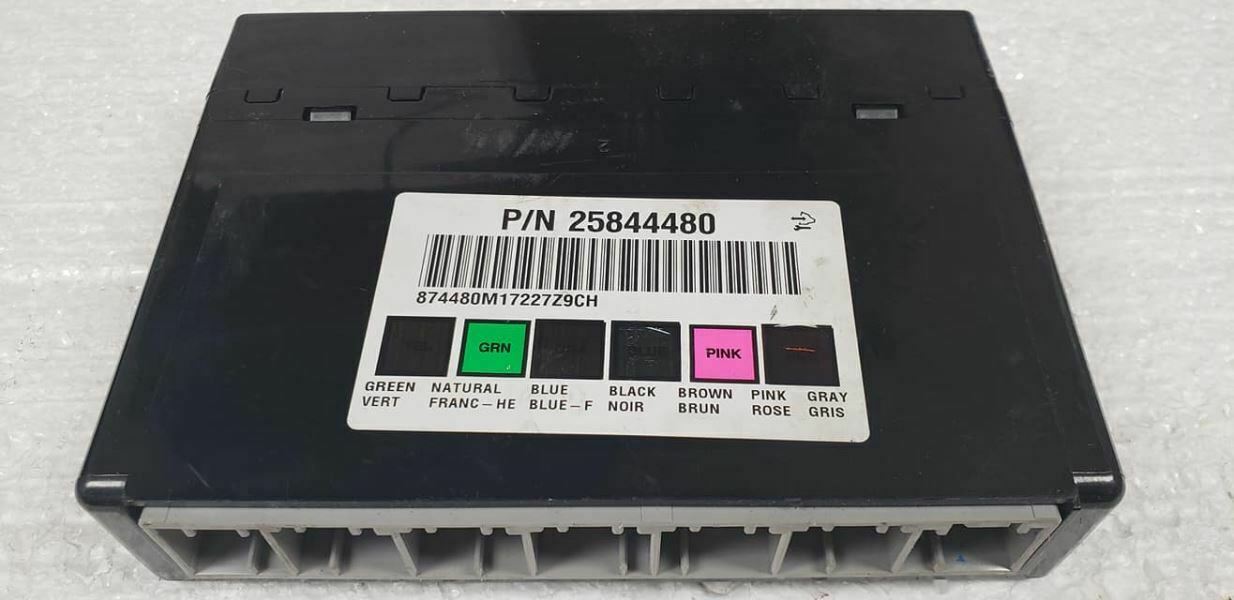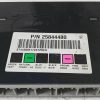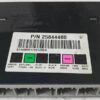Tired of Unpredictable Electronics in Your GM Truck?
If you’re dealing with a frustrating array of electrical issues in your 2011 Sierra Denali 3500—from flickering lights and a dead HVAC system to phantom security alerts—the root cause is often a failing Body Control Module (BCM). As the central command center for your truck’s body electronics, a faulty BCM can wreak havoc, making your vehicle unreliable and unsafe. This isn’t just an inconvenience; it’s a problem that compromises your truck’s core functionality. This direct-fit replacement, equivalent to GM part 15284816, is the definitive solution to restore order and get your truck operating as it should.
We take the guesswork and high dealership costs out of the equation. Each module is expertly programmed to your vehicle’s specific VIN before shipping. This means no expensive trips to the dealer for programming. It arrives ready for a true plug-and-play installation, ensuring all factory options for your truck work seamlessly from the moment you connect it. For the professional mechanic or the weekend warrior, this is the most efficient way to solve complex electrical problems and get your 2011 Sierra Denali 3500 BCM functioning perfectly again.
Common Signs of a Failing BCM
- ✔ Electrical systems acting erratically, such as power windows, door locks, or interior lights failing intermittently or all at once.
- ✔ The HVAC blower motor not working or the climate controls being completely unresponsive.
- ✔ An airbag warning light on the dash, often accompanied by Diagnostic Trouble Code (DTC) B1001.
- ✔ The security system malfunctioning, causing no-start conditions, stalling, or erroneous alerts.
- ✔ Poor ground symptoms or a host of communication codes (U-codes) that are difficult to trace.
- ✔ Wipers or exterior lights turning on by themselves or not working when you need them.
From the Diagnostic Bay: The Case of the Ghostly Glitches
I once had a 2011 Sierra 3500 in my shop that was a diagnostic nightmare for the owner. The radio would randomly shut off, the dome light would flicker, and occasionally the truck wouldn’t start. He’d replaced the battery and checked the alternator, but the problems persisted. After hooking up my scanner, I saw a dozen communication codes pointing to the BCM. These modules are sensitive to voltage spikes and bad grounds. In his case, a corroded ground strap near the driver’s side frame rail was causing intermittent voltage drops, which eventually damaged the internal circuits of the original BCM. We replaced the module with a VIN-programmed unit like this one and cleaned all the main grounding points. The truck’s electrical gremlins vanished instantly. It’s a powerful reminder: when you replace a BCM, always inspect the main battery and body grounds—it’s the best insurance against a repeat failure.
A Straightforward Guide to Installation
- ✔ Step 1: Safety First. Always disconnect the negative terminal from your truck’s battery before starting any electrical work.
- ✔ Step 2: Locate the BCM. On most GMT900 platform trucks, including the Sierra, the BCM is located under the driver’s side of the dashboard, near the steering column. You may need to remove a lower dash panel for access.
- ✔ Step 3: Disconnect and Remove. The BCM is held in place by retaining clips and has several large multi-pin connectors. Carefully press the release tabs on each connector and pull them straight out. Once all connectors are unplugged, unclip the module from its bracket.
- ✔ Step 4: Install the New Module. Snap the new, pre-programmed BCM into the mounting bracket and firmly reconnect all the electrical connectors. You’ll hear a click as they lock into place.
- ✔ Step 5: Reconnect and Test. Reconnect the negative battery terminal. Turn the key to the ‘On’ position and test all functions: lights, wipers, locks, windows, and the HVAC system.
- ✔ Step 6: Post-Installation Checks. In some cases, an airbag light may remain on (DTC B1001). This requires a professional scan tool to perform the ‘Setup SDM Primary Key in BCM’ function. This syncs the new BCM with the airbag system. Similarly, a ‘Brake Pedal Position Relearn’ may be needed.
Will This Fit My Truck or SUV?
This Body Control Module is a direct replacement for a wide range of General Motors vehicles and is interchangeable with part numbers 25835966, 15263363, 15263497, 15878753, 15284816, 15943678, 15926094, and more. It is engineered for a perfect fit in models including, but not limited to:
- GMC Sierra / Sierra Denali (1500, 2500, 3500): 2007-2013
- Chevrolet Silverado (1500, 2500, 3500): 2007-2013
- Chevrolet Tahoe / Suburban: 2007-2011
- GMC Yukon / Yukon XL: 2007-2011
- Cadillac Escalade / ESV / EXT: 2007-2011
- Chevrolet Avalanche: 2007-2011
By providing your VIN during checkout, you guarantee that the 2011 Sierra Denali 3500 BCM you receive is programmed for your exact vehicle configuration, ensuring a hassle-free repair.
Frequently Asked Questions
Does this BCM really not require a trip to the dealer?
That’s correct. We program the module to your vehicle’s VIN before it ships. This makes the installation plug-and-play, saving you hundreds in dealership programming fees.
What tools are needed for the installation?
Basic hand tools are all that’s required for the physical installation, typically a socket set and a trim removal tool for the lower dash panel. However, if the airbag light persists, a high-level diagnostic scan tool is needed to perform the SDM key sync procedure.
Is there a core charge for my old part?
No, there is absolutely no core charge. You can keep your old module or dispose of it without the hassle of sending it back.
What happens if I install this and my problems don’t go away?
While a faulty BCM is the most common cause of these symptoms, underlying issues like poor grounds or wiring shorts can also be factors. We recommend inspecting the main ground connections during installation. Our expert support team is also available to help you troubleshoot.
How does the VIN programming work?
You provide your vehicle’s 17-digit VIN when you place your order. Our technicians use this information to load the correct GM factory software and vehicle-specific calibrations onto the module. This ensures it communicates correctly with all other computers in your truck.


